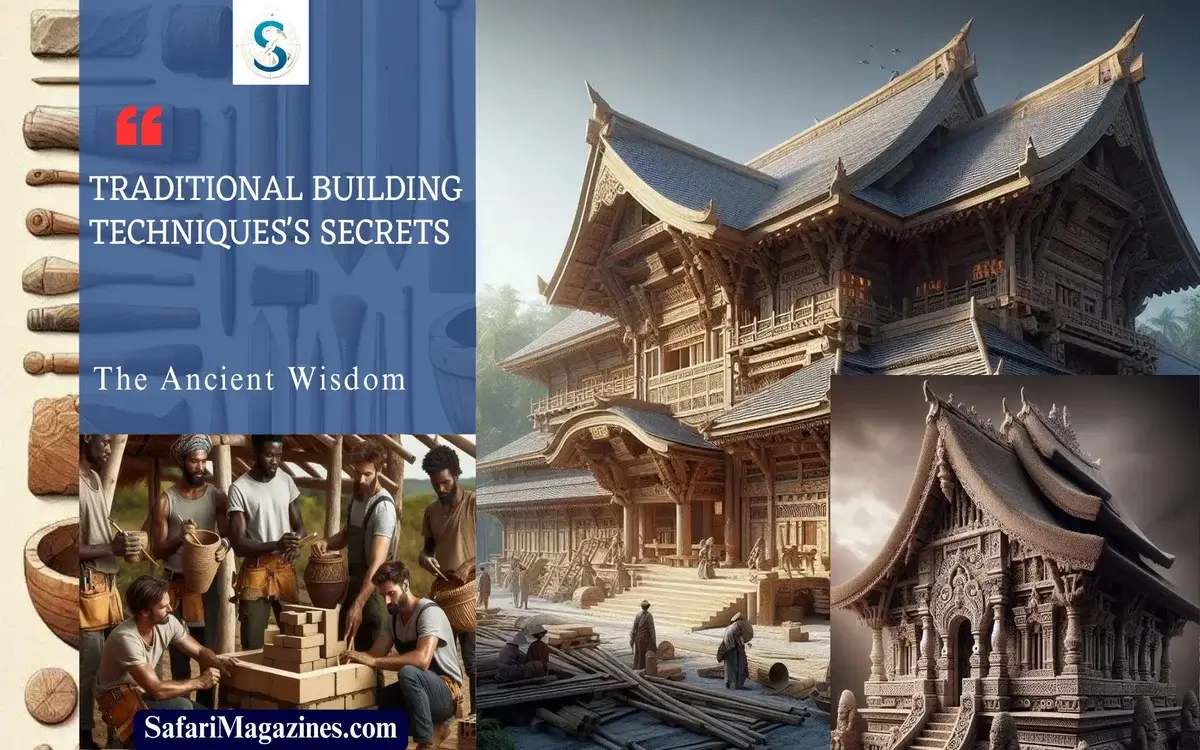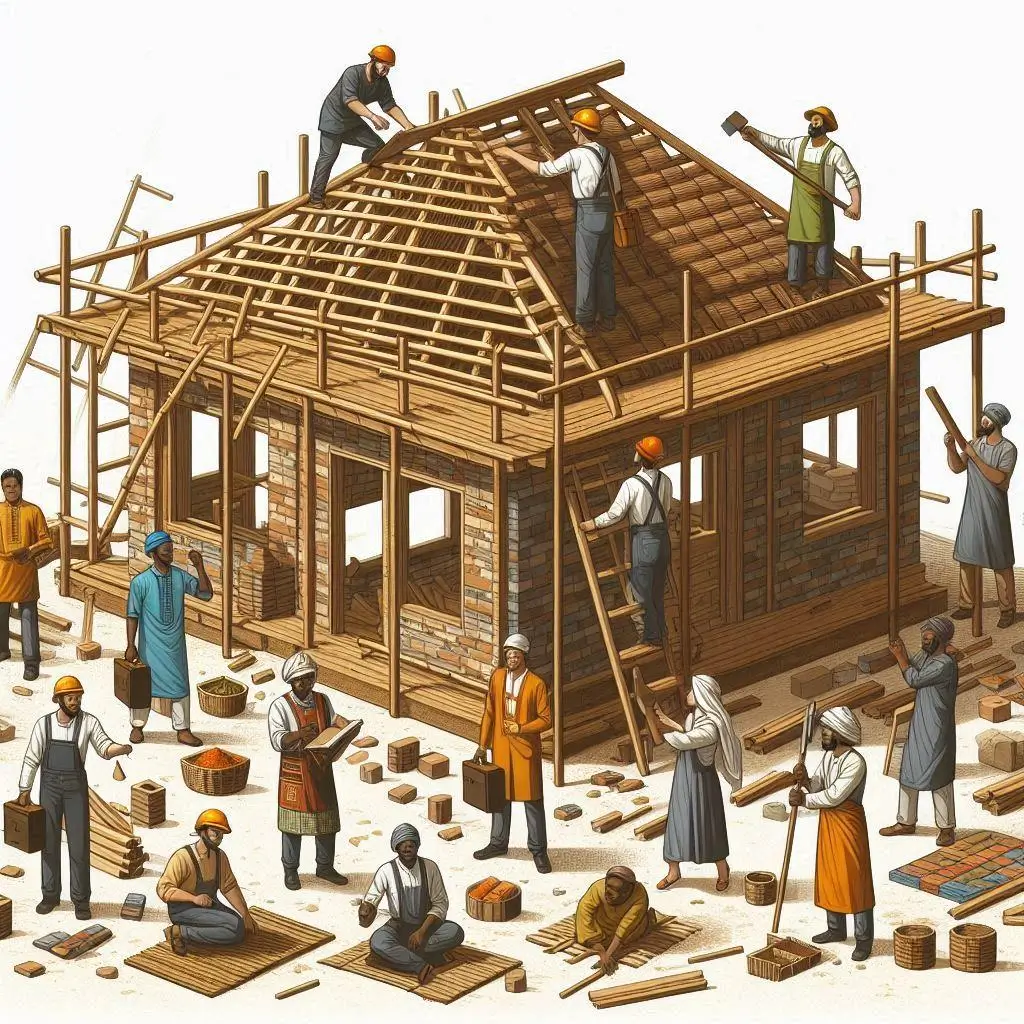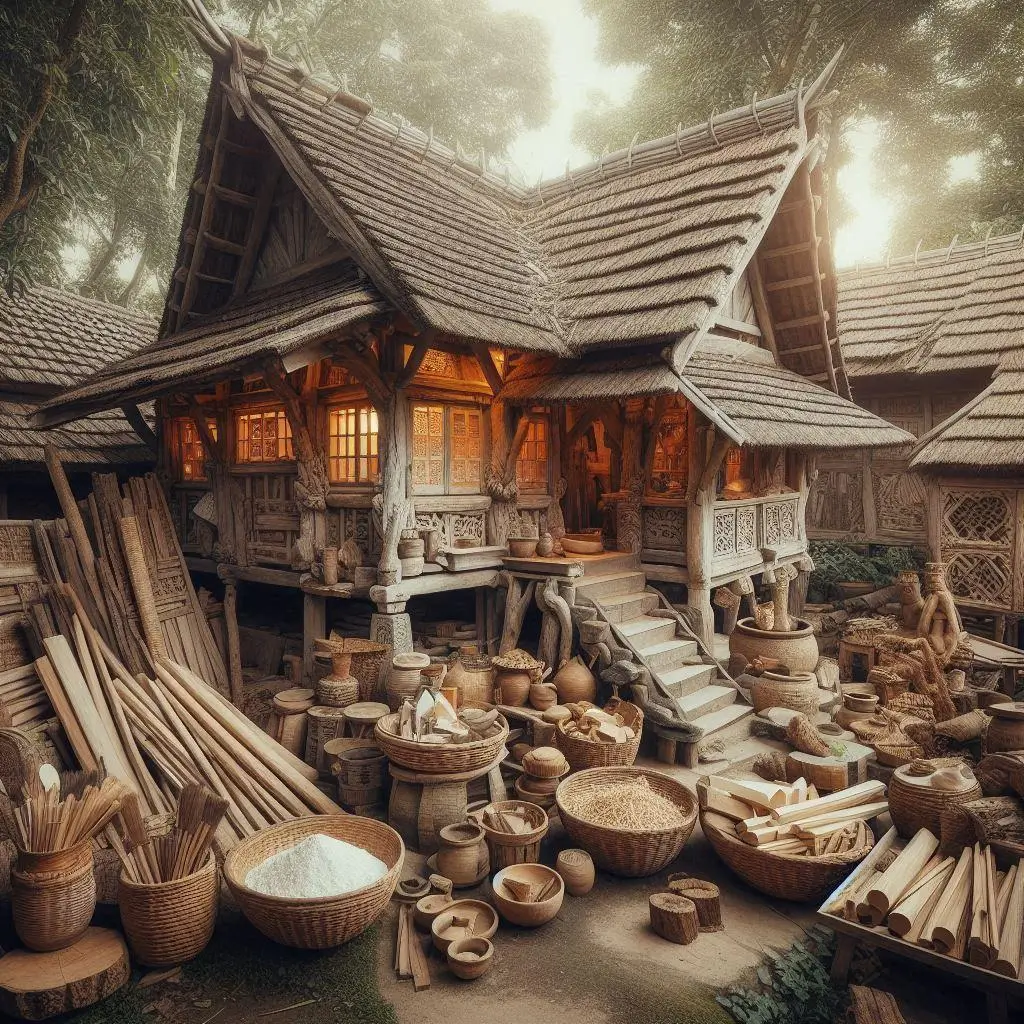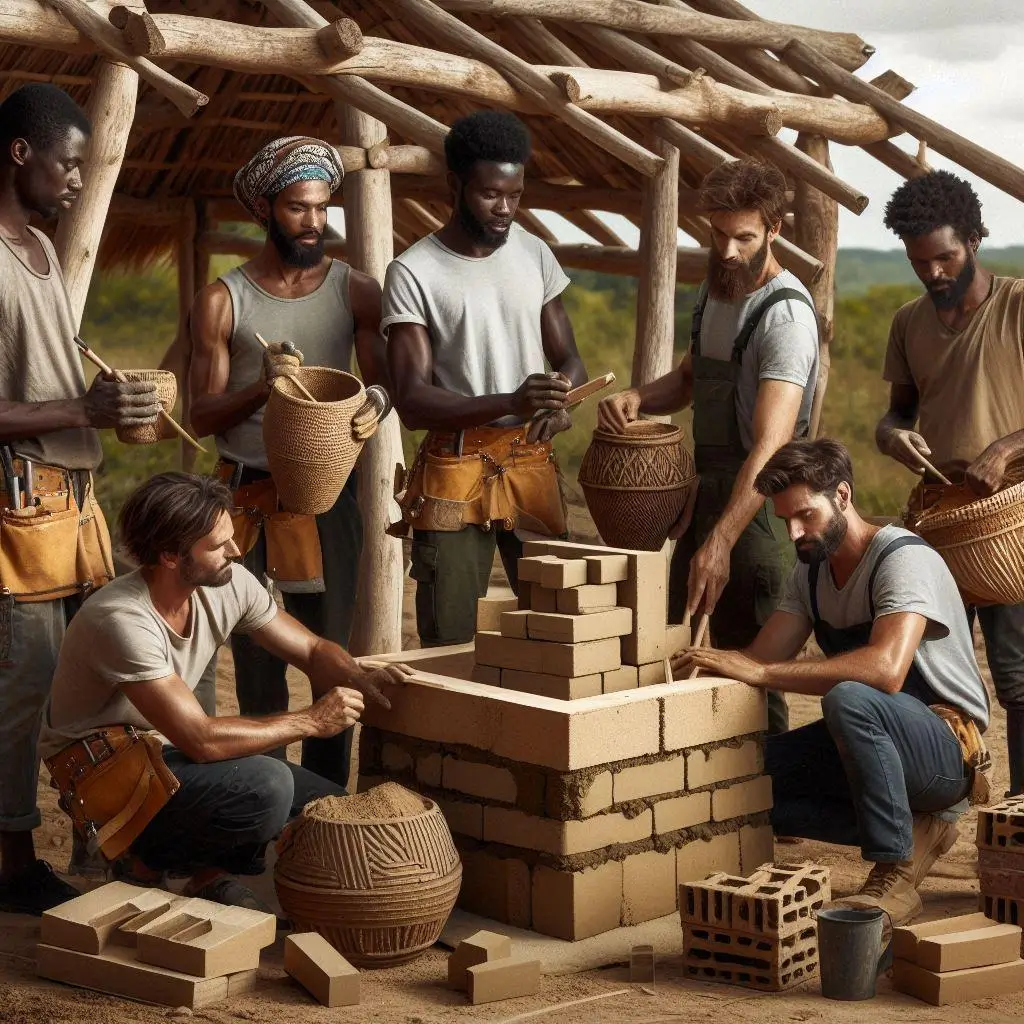
Traditional Building Techniques’ Secrets. The architecture story reflects the human story of his development at every stage of the human cultural level. It also reflects his skills in the use of stone, mud and other traditional materials to create regular geometric shapes in the construction of a building that does not fall.
When you picture traditional buildings, what comes to mind? Perhaps a cozy cottage with thatched roofing or a monumental stone fortress that has stood the test of time. Traditional building techniques are far more than just methods used in the past. They are a gateway into understanding sustainable, durable, and beautiful structures that still inspire modern construction.
Traditional construction techniques summarize for us the skillfulness of ancient societies in creating structures that work in harmony with nature and the surrounding environment. We may take advantage of the wisdom of the ancients to take lessons or insights when we move on to modern construction techniques esp when it comes to sustainability.
Table of Contents
ToggleWhy Traditional Building Techniques Matter Today
While modern construction often focuses on speed and efficiency, traditional building techniques offer a more holistic approach to architecture. They emphasize sustainability, resilience, and the use of natural materials, all of which are becoming increasingly relevant as we face global challenges like climate change and resource scarcity.

Continue reading: Traditional Building Techniques’ Secrets
Sustainable Practices in Traditional Methods
Many traditional building techniques were inherently sustainable. From the use of local materials to energy-efficient designs, these methods minimized environmental impact long before “sustainability” became a buzzword. For instance, the thick walls of adobe structures naturally regulate indoor temperatures, reducing the need for artificial heating or cooling.
Key Traditional Building Materials
Materials used in traditional construction varied greatly depending on local resources, but some have become iconic. Let’s take a closer look at some of the most common materials that form the foundation of traditional building techniques.
Continue reading: Traditional Building Techniques’ Secrets
Wood

Wood (also called Timber and Lumber) has been a main material of traditional building for centuries. Its flexibility, abundance, and versatility made it a go-to material. Think of the timber-framed homes of Europe or the intricate wooden temples of Japan. Not only is wood sustainable when sourced responsibly, but its natural properties provide warmth and character to buildings. Lumber still used until today as furniture, and nobody can imagine life without it.
Stone
Stone is synonymous with durability. From the pyramids of Egypt to medieval European castles, stone structures have stood for millennia. This natural material is fireproof, weather-resistant, and requires minimal maintenance, making it a perfect candidate for long-lasting structures. Traditional stonemasonry is an art form, combining craftsmanship and functionality.

Clay and Mud
Mud and clay-based building techniques, such as adobe or cob, are still in use today in many parts of the world. These materials are locally sourced, inexpensive, and provide excellent insulation. Ancient civilizations, such as the Mesopotamians and Indigenous people of the Americas, have used these materials to create durable, energy-efficient homes.

Continue reading: Traditional Building Techniques’ Secrets
Timeless Traditional Construction Methods
The ingenuity of ancient builders is evident in the variety of construction methods that have stood the test of time.
Post-and-Beam Construction
One of the simplest yet most effective methods, post-and-beam construction involves vertical posts supporting horizontal beams. This technique is found in various cultures, from ancient Greece to Chinese temples. The method creates an open, flexible interior space while providing a sturdy framework.
Adobe Building Techniques
Adobe is one of the oldest and most eco-friendly building materials, consisting of earth mixed with water and organic materials like straw. Used extensively in arid regions, adobe walls are thick, providing excellent insulation and maintaining a stable indoor climate.
Cob Construction
Similar to adobe, cob construction uses earth and straw but in a different application. Instead of making bricks, cob is applied directly to form walls. This hands-on method allows for organic shapes and is often seen in English cottages, giving them their characteristic rounded, earthy look.
Continue reading: Traditional Building Techniques’ Secrets.
Regional Variations in Traditional Building
Every region has its own unique approach to traditional construction. These methods were shaped by local materials, climate, and cultural influences, resulting in a wide range of architectural styles.
European Techniques
Europe’s traditional building styles are incredibly diverse, from the half-timbered houses of Germany to the stone cottages of Ireland. These buildings often reflect the region’s historical context, using locally sourced materials like wood, stone, and thatch.
African Vernacular Architecture
Africa’s traditional architecture is equally varied, with structures designed to adapt to the continent’s diverse climates. For example, the mud-brick homes in Mali or the circular, thatched huts of East Africa reflect an intimate connection with the environment.
Asian Traditional Construction
In Asia, traditional building methods are often deeply rooted in spiritual and philosophical beliefs. Japanese architecture, for instance, emphasizes harmony with nature, using wood and paper in a way that promotes simplicity and tranquility. Old city of Sana’a stand as like evidence of skillfulness of traditional building techniques, as it build with clay and mud. Meanwhile, Chinese construction techniques like dougong (a complex bracket system) allowed for large, durable wooden structures.
Continue reading: Traditional Building Techniques’ Secrets.
Cultural Significance of Traditional Buildings
Traditional buildings are more than just physical structures; they have both cultural and symbolic significance. Whether through religious symbolism, social status, or community values, these buildings often reflect the deeper cultural narratives of the societies that built them.
Symbolism in Traditional Architecture
Many traditional buildings carry symbolic meanings. In Europe, the spires of Gothic cathedrals were meant to point toward the heavens, while in China, the orientation of homes followed principles of feng shui to harmonize with natural energy. These cultural connections imbued buildings with more than just functional value.
Continue reading: Traditional Building Techniques’ Secrets.
Preserving Traditional Building Methods for Future Generations
With the rise of modern construction techniques, many traditional methods are at risk of being lost. However, there is a growing movement to preserve these techniques, not only for their historical value but also for the sustainable practices they offer. Education, restoration projects, and integrating traditional methods into contemporary designs are essential for keeping this knowledge alive.
Summary of Traditional Building Techniques
Traditional building techniques are far more than relics of the past. They offer sustainable solutions, connect us to our cultural roots, and inspire modern architecture with their timeless wisdom. As we face new challenges in construction and design, revisiting these age-old methods may hold the key to creating a more harmonious and resilient built environment.
Continue reading: Traditional Building Techniques’ Secrets.
FAQs obout Traditional Building Techniques
Q1: What are traditional building techniques?
A1: Traditional building techniques refer to construction methods passed down through generations, often using locally sourced, natural materials like wood, stone, and clay.
Q2: Why are traditional building techniques important today?
A2: They offer sustainable, energy-efficient, and environmentally friendly construction methods that can inspire modern architecture.
Q3: Can traditional building techniques be used in modern construction?
A3: Yes, many architects integrate traditional methods into modern designs, particularly for eco-friendly and sustainable projects.
Q4: What is the most common traditional building material?
A4: Wood, stone, and clay are among the most common materials used in traditional construction methods worldwide.
Q5: How can we preserve traditional building techniques?
A5: Preservation involves education, hands-on restoration projects, and integrating traditional methods into contemporary architecture.
